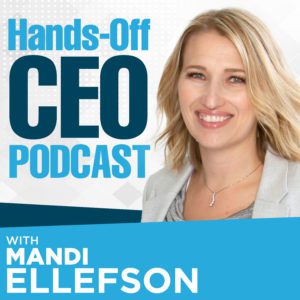How to Calculate Cost Variance + a Better Way to Drive Agency Profits
If you are like most consulting agency owners in the “7-figure slump”, perhaps you can relate to some of these challenges:
- Profit growth is stagnant — and overly dependent on you as the CEO. You’ve created a great deal of success, but your mental bandwidth is totally maxed out.
- Maybe you’ve tried hiring leaders, building more systems, and the other growth models — some growth happens, but it’s all very tied to you, and it’s not happening as smoothly as you’d like.
You are looking to improve your business profitability. And to do that, you need a clear roadmap for profitable, scalable service growth. To do that, we need to look at stabilizing profits BEFORE you try to scale them.
Profitably scaling will give you the sustainable growth you know is possible, requiring less of you as the CEO.
First, I will share the typical way to calculate and manage variance in an agency. It’s complex but valuable. Then, I will share a simpler and even more impactful way to grow profits by as much as 600%.
I’ll show you why complicated management systems mask the root cause of profit issues. Be sure to read to the end because that’s where it gets juicy. It’s counterintuitive to many folks, but the top 1% of agencies quietly do this and scoop up as much market share as they dare to bring on. While 99% of agencies battle tight profit and cash because they focus on the wrong thing!
First, what is cost variance, and why should you care about it?
Knowing how to calculate cost variance allows you to measure your agency’s financial performance, keep costs under control, and highlight money leaks in your fulfillment and operations. Cost variance analysis will enable you to make informed decisions that strengthen weak processes and improve efficiency.
Cost variance is an essential metric for service businesses to preserve profits. Cost variance is the difference between your budget for a project or product and what it costs you. When you calculate cost variance, you gain great insight into the actual financial performance of service fulfillment, helping you identify areas where you may be overspending.
Taking corrective action based on your cost variance calculations can help you stay on budget and avoid damaging financial shortfalls. To put it simply, ignoring cost variance can eat up your profits.
How do you calculate cost variance? What you need to know to track your agency’s efficiency
To calculate the cost variance, you need to understand the following components:
- Actual Cost (AC): The total amount spent on a project.
- Earned Value (EV): The value of the work completed up to a specific point in time.
- Planned Value (PV): The cost that should have been incurred.
Once you have these figures, you can determine cost variance by subtracting the actual cost from the earned value (EV – AC).
There are two commonly used methods to calculate cost variance, which are:
- Earned Value Management (EVM): EVM is a method that combines scope, schedule, and financial tracking to provide an integrated view of project performance. This method utilizes the earned value, actual cost, and planned value. It is highly effective in assessing the project’s overall progress and profitability.
- Direct Cost Variance Formula: This method focuses on cost management by calculating the difference between a project’s actual and budgeted costs (BC – AC). It helps project managers identify potential cost overruns and adjust their strategies.
Project managers and consulting agencies looking to calculate cost variance should select a method based on their project size, complexity, and financial tracking tools.
How do you analyze the results? Mitigate financial risks in the future by improving now.
Once you have calculated the cost variance, analyze the results bearing the following practices in mind:
- Continuous Monitoring: Keep a close eye on the project’s cost variance from its outset to promptly detect deviations from the estimated budget.
- Revisit Budget Estimates: Regularly review and adjust your budget estimates for unexpected project requirements or resource changes.
- Communicate with Stakeholders: Keep your team and stakeholders informed about cost variances to maintain trust and ensure quick resolution of potential issues.
- Perform Root Cause Analysis: Identify the reasons for cost variance and strategize ways to rectify and avoid future financial missteps.
Calculating cost variance helps ensure project success and profitability.
Keep it simple by defining expectations upfront, controlling fixed costs, and evaluating hours worked against budgeted time.
You’ll be able to identify potential adverse outcomes in advance and take necessary steps to avoid them. This knowledge can be the difference between a successful project and a costly failure, making it an essential skill for any agency looking to scale up profitably.
Mastering and meticulously managing cost variance is critical for health profits for the typical agency with weak margins. (Sadly, nearly all agencies are little more than breaking even if you consider the full market salary that the owners should and often don’t take– don’t shoot the messenger).
Does all this sound a bit exhausting?
There is certainly a good case for quality KPIs and metrics. But running a business on such razor-thin margins sucks! What if, rather than masking the problem with more complex tracking and layers of management, you dramatically reduce the need for it?
A more powerful way to optimize your agency’s costs and increase agency profits by as much as 600%
Some agencies have never heard about calculating cost variance and still have very profitable and successful consulting agencies. How?
They focus on a different KPI: client value.
What drives value? Well, it’s different for each client, which causes all the variance in the first place. Instead of adding extra complexity, you simplified the business, not by watering it down and “productizing” around deliverables that may or may not create actual tangible outcomes for a client. “Results may vary,” you are forced to tell the prospect.
But what if you could cherry-pick and work with only the very best clients instead? How much easier to scale would it be if your business was filled only with your top 5-10% of clients whom you know you could deliver the biggest transformations? Our clients have found it’s A LOT easier. Doing this allowed Tom to increase profits by 600% (listen to his podcast episode and read the forward to my book. It allowed Wally to increase fees from $25k to $100k to $250K and is now working on selling a million-dollar offer.
There is a MUCH BETTER WAY!
99% of Agencies battle tight profit and cash because they focus on the wrong thing!
In the graphic above, they attack profit, shown in orange, by focusing on decreasing costs. Now, I am all about cutting waste. But more often, it’s a misery pair of scissors that cuts too deep and hurts clients, resulting in the same “scalability.” Yeah, that’s that scalability… it’s madness.
Your model is chronically unsustainable at the core because your prices aren’t high enough compared to the costs to deliver your services.
The problem is that clients don’t care how much it costs you to deliver your services. So, how do you increase profits by getting paid what you deserve?
This might be easier to impact in a consulting agency than you think. When the costs are too high relative to income, insufficient profits exist to adequately staff the firm and deliver a quality service. This can lead to quality declines, profit declines, and/or you have to work more to make up the difference.
But your business is not working with finite numbers. Costs are too high only relative to incoming cash. Grow the right sales, and costs might actually become proportionally relatively low.
The simplest way to generate more profits quickly is to increase pricing.
Example 1: A 10% increase in fees doubles profits.
- $100k with 10% profit = $10,000 ; increase fees 10% = $110K
- $10,000 extra profit
- $10,000 original + $10,000 extra profit = $20,000
- Double profits with just a 10% increase in fees!
Example 2: A 50% increase in fees generates 5X profits.
- $100k with 10% profit = $10,000 ; increase fees 50% = $150K
- $50,000 extra profit
- $10,000 original + $50,000 extra profit = $60,000
- 500% profits increase from a 50% increase in fees!
Please note there may be additional costs with the second option, but many of our clients see minimal cost increases. These conservative examples demonstrate why those who follow the Hands-Off CEO scaling model report much higher than average net profit margins. It’s why one agency CEO increased net profits by 40% in 9 months. Another company was able to increase net profits by 600% over 3 years.
CEOs who follow this framework can spend more time working on their business and enjoy the freedom to pursue essential activities in their lives besides just working.
More critical than profit is cash flow. But that’s another topic for another day.
First, define results. Stretch. Think bigger.
They only take on those clients for whom you can do your best results. That means that agencies must create a sales process and can’t rely on whatever the wind blows in that month. Taking on the wrong clients can paralyze your operations, eat up profits, and reduce your business to mediocre deliverables, which you are way better than. Complicated management systems just mask the problem.
(And stop talking to any CFO or “operations expert” or accountant who suggests you do this because they don’t really understand how a service is successful.)
FORMULA: Do great work for great clients > earn better case studies > streamline business toward delivering those outcomes every time> make more significant promises and sell for 3X higher so that you can actually deliver on them and make a profit.
Thank me later for all the extra profit you take home and how happy your clients and team are.
Want to see how this all fits together? Buy “The Hands-Off CEO” book here. Download our free Executive Book Summary & Consulting Agency Scalability Checklist with the exact steps to 3X fees, safely exit yourself, and profitably scale.






